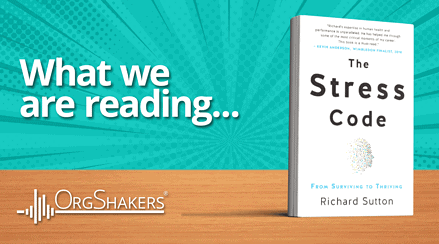Menu

Employee Assistance Programs: How Do HR Choose the Right One?
Every year, 12 billion working days are lost worldwide to depression and anxiety, costing the global economy $1 trillion, predominantly due to the debilitating effects they have on productivity.
As we continue to see employers make strides towards creating psychologically safe workplace cultures, a key component for supporting the immediate needs of employee wellbeing is an employee assistance program (EAP). EAPs are outsourced mental wellbeing services that are designed to support employees who are facing personal or professional issues, and will tend to offer services such as counselling, a 24/7 support line, work-life balance support, legal and financial advice, referral services, and manager training.
With the importance of mental wellbeing continuing to rise, what should HR consider when selecting an EAP for their organization?
Firstly, it’s essential to assess the scope of services offered by the EAP, which should be as broad as possible to include more complex support such as substance abuse assistance and crisis intervention services. By offering diverse services, employees are more likely to find the support they need, enhancing their overall wellbeing and, in turn, reducing absenteeism.
In addition, HR needs to consider the accessibility of the service. Employees should be able to easily access the support they need when needed, whether through phone consultations, online resources, or in-person counselling sessions. Having this user-friendly platform and streamlined referral process will encourage employees to utilize the program and seek assistance without hesitation.
The privacy and confidentiality policies of the EAP provider should also be considered. It’s important that employees feel comfortable seeking help without fear of their personal information being disclosed to employers or team members, as this will help to build trust with the program and ensure that it is properly utilized.
Another consideration would be the cultural competence of the provider. A diverse workforce requires culturally sensitive support services that are inclusive and respectful of different backgrounds and beliefs. Partnering with an EAP provider that understands and respects these cultural nuances ensures that all employees are receiving appropriate and effective assistance tailored to their unique needs.
Lastly, HR needs to be cost-effective when choosing an EAP. While investing in employee wellbeing yields long-term benefits (such as improved productivity and engagement), it’s essential to evaluate the return on investment of different program options.
Once a program has been selected, don’t hesitate to gauge employee satisfaction with it. Ask those employees who have used the services and get a sense of whether it is making a difference for them – and identify areas where it could be improved. An EAP should evolve and adapt to meet the changing needs of the workforce, and having consistent feedback helps to ensure it remains a valuable investment.
If you would like to discuss how we can support your company with choosing the best EAP – or any other wellbeing support you may need – please get in touch with us.



